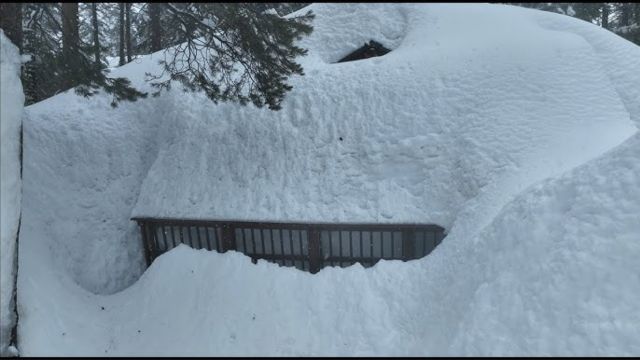The Blizzard of 1952 is still remembered as a pivotal event in the history of weather in California. This remarkable occurrence spread throughout the state and had a long-lasting effect on the Sierra Nevada region and other areas. Let’s explore the icy past to learn more about the dramatic consequences of this epic snowfall.
1952’s Winter: A Stormy Season
A winter of tempests was experienced in January 1952 on both the East and West Coasts. The public was captivated by the heroic story of Captain Kurt Carlsen, who bravely clung to his sinking ship, the S.S. Flying Enterprise, for almost two weeks, while the R.M.S. Queen Elizabeth faced fierce storms throughout her transatlantic voyage.
San Francisco City: An Opulent Streamliner Trapped
In the midst of this air chaos, a 15-car luxury streamliner named the City of San Francisco left Chicago for Oakland. Republican National Committee officials, returning veterans, Midwesterners fleeing the winter, and families with small children heading back home after Christmas vacations were among the varied mix of passengers.
Traveling by train was classy with the City of San Francisco providing roomy seats, Pullman berths, and a club car serving martinis with a touch of vintage style. However, destiny had other ideas.
Sierra Nevada snowbound
The train came into an unexpected and severe snowstorm as it chugged across the Sierra Nevada. The opulent streamliner came to a stop close to Yuba Pass, and the tracks vanished beneath a heavy layer of snow. This unplanned winter ordeal began for 236 passengers and personnel.
On a smaller period, the circumstances paralleled the predicament faced by the Donner Party in 1846. Despite its intensity, the storm of 1952 did not continue as long as the famed Donner winter. Nevertheless, it cost a lot: two people died and a great deal of suffering was experienced.
Upheaval in All Sectors
Every aspect of life was disturbed by the 1952 Blizzard. Plans for recreation were abandoned, agriculture suffered, communication broke down, and transportation came to a complete stop. While they waited for rescue personnel to remove the tracks and reestablish communication with the outside world, the stranded passengers clung to optimism.
A Reminder of the Power of Nature
The 1952 Blizzard is still vivid in Californian memories, demonstrating the unpredictable character of the natural world. It serves as a warning that winter can suddenly unleash its wrath, even in a state recognized for its sunny beaches and palm palms.
Let’s acknowledge the forces that shape our planet and pay tribute to the tenacity of those trapped passengers as we retell this frozen story. The 1952 Blizzard was an exceptional and uncommon occurrence that profoundly impacted California’s history.
Read More: Colorado Nuclear Fallout Survival How to Stay Safe
In Summary
The 1952 Blizzard had a significant influence on the Sierra Nevada region and beyond, making it a noteworthy occurrence in California’s meteorological history. Echoing the difficulties of the famous Donner Party, the City of San Francisco, a luxury streamliner, found itself stranded in an unforeseen snowstorm. The blizzard, which disrupted daily life, transportation, and communication, is a stark reminder of nature’s unexpected forces in a state that is recognized for its bright weather. The perseverance of individuals who went through the trauma is a testament to how resilient people can be when faced with the wrath of nature

